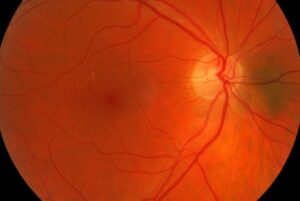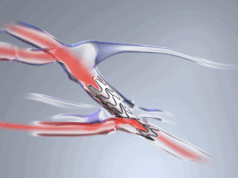 Patients likely to develop end-stage kidney disease (ESKD) may first exhibit ageing in the eye, a study in the American Journal of Kidney Diseases (AJKD) has suggested. Retinal age gap, a measure which comprises retina-predicted age minus the patient’s actual age, was “significantly associated with incident ESKD,” said the study authors, led by Lisa-Zhuoting Zhu (Centre for Eye Research Australia, Melbourne, Australia).
Patients likely to develop end-stage kidney disease (ESKD) may first exhibit ageing in the eye, a study in the American Journal of Kidney Diseases (AJKD) has suggested. Retinal age gap, a measure which comprises retina-predicted age minus the patient’s actual age, was “significantly associated with incident ESKD,” said the study authors, led by Lisa-Zhuoting Zhu (Centre for Eye Research Australia, Melbourne, Australia).
They noted that patients with the same chronological age could exhibit different biological ages, highlighting the “growing evidence showing the relationship between ageing biomarkers” and chronic kidney disease (CKD) and ESKD. Discovering markers that may indicate the onset of ESKD early could allow clinicians to make earlier interventions to prevent progression of the condition. The study authors stipulated that existing studies on the utility of biomarkers were sometimes limited by “cross-sectional designs and small sample sizes.” Their study sought to change that for the health of the retina, which “has long been considered as a window to the kidney,” and to explore whether the retinal age gap could predict for ESKD.
The study utilised the data of the UK Biobank, which includes those of over 500,000 patients aged 40–69. Employing a deep learning model, they used fundus images of the eyes of 46,969 patients to predict their retinal age gap. Those patients’ ESKD status and diagnosis date were obtained from National Health Service (NHS) Digital. The follow-up period was from the date of fundus image acquisition to “the first occurrence of ESKD or lost to follow-up or death, whichever came the earliest.”
The results showed a statistically significant association between retinal age gap and ESKD occurrence. For each one-year increase in the retinal age gap, patients were 9% more likely to experience incident ESKD. There was also a notable difference in retinal age gap’s association with ESKD between male and female patients, with an 8 and 13% risk increase with each one-year increase. A “trend of increasing association was noted with incident ESKD across different quartiles of retinal age gaps,” and those in the fourth quartile were at a significantly greater risk of ESKD compared to those in the first (P = 0.002).
The study authors made the case in their discussion that retinal age gap is thus “a promising biomarker of future occurrence of ESKD independent of traditional risk factors.” They cited a Mendelian randomisation study into the link between ageing and kidney disease led by Sehoon Park (Seoul National University, Seoul, South Korea), stating that “telomere attrition was significantly associated with a higher risk of kidney function decline,” but made the case for retinal age gap as a biomarker, not least due to “its non-invasive nature, ease of calculation and accuracy.”
Finally, they speculated about the mechanisms explaining the association between retinal age gap and ESKD, citing the retina and kidneys’ “common developmental pathway.” These included inflammation, endothelial dysfunction and oxidative stress. While previous studies, they said, have found retinal age gap an effective biomarker for “vascular stiffness and vascular ageing,” their study may pave the way for it to play a larger role—and increase the compliance rate—in kidney disease screening.












